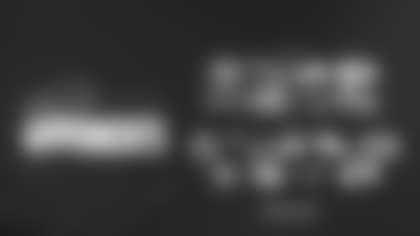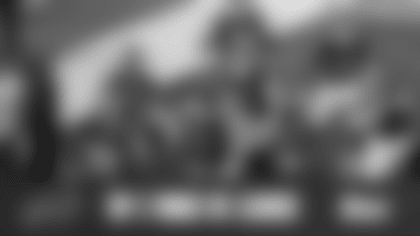Year one of any new coaching regime is often wrought with adjustments. Coaches must adjust to the talent they inherit, players must adjust to a new playbook, and players and coaches must adjust to one another. Some of those adjustments went better than others for the Bills offense in 2010. On the whole however, head coach Chan Gailey and his offensive staff showed an ability to do more with less and there were more steps forward than back when it came to the efficiency of their offense this past season as opposed to 2009.
Looking at some of the offensive numbers there are improvements from last season. Some might appear to be only marginal on the surface. For example, Buffalo's total offense improved by 31 yards per game from 274 to 305 yards, good enough to bump their rank from 30th in the NFL in 2009 to just 25th in 2010.
What gets lost in looking at those numbers are the more obscure facts, like Buffalo's time of possession figure of 27:40 this past season. It was fifth lowest in the league, and was a lower possession time than the Bills had last year (27:50). One might want to point to third down conversions as the main issue, which was very much a problem in 2009 when the Bills were dead last converting third downs (25.8%).
However, Buffalo improved that figure this season converting 38 percent of the time to rank in the middle of the pack this season (18th), thanks in large part to the decision making of Ryan Fitzpatrick and the playmaking of Stevie Johnson, who ranked second in the league in third down receptions.
"I think our guys came to understand exactly what we were trying to get done," said Gailey. "We saw the coverages that we expected every week and the receiving corps gained familiarity with the quarterback and the quarterback gained familiarity with the receiving corps."
When injuries struck the receiving corps their third down effectiveness was somewhat compromised, but was still an improvement over last season when Buffalo converted just 51 third downs all season.
The main factor in Buffalo's sparse time of possession was their porous run defense, which let opponents chew up clock leaving Buffalo with little opportunity to run much more than 55 plays a game (57.5).
What also negatively contributed were turnovers as Buffalo committed a league-high 39, including a league-leading 18 lost fumbles, and 21 interceptions good for fourth most in the NFL.
"I think that's going to be the biggest thing we focus on in the offseason," said Fred Jackson. "Any time we had the ball and we were able to hold onto it we were able to go down and put points up. Anytime we had five or six turnovers in a game it got ugly for us. That'll be the biggest thing they harp on on offense."
Though the turnovers certainly hurt Buffalo's offensive efforts they were able to avoid negative plays in other ways, unlike in 2009, when at times the Bills couldn't get out of their own way.
In 2009 Buffalo had 107 penalties good for eighth most in the league and they were last in the league in sacks allowed with 46. Fast forward to 2010 and the Bills were noticeably better in pass protection allowing just 34 sacks to rank 15th and had the sixth fewest penalties in football (82).
"In the second half of the season we were more comfortable in our scheme," said Eric Wood. "We fought pretty hard and were able to play some pretty good ball at times. We just need to do more of that going forward."
One of Buffalo's biggest improvements offensively came in the red zone. In 2009 the Bills were abysmal in the red zone where they scored touchdowns less than a third of the time (31.6%) to rank last in the league.
This past season Buffalo's success rate was noticeably higher as they ranked 18th in the league with a touchdown percentage of (51.4%). It's still not among the elite in the NFL, but a 20 percent improvement is noteworthy.
Though pleased in seeing some of their statistics trending upward the Bills are far from satisfied.
"There were improvements, there were positives, everything somewhat came together for guys individually," said Johnson. "We couldn't put it together as a team to produce many wins, but as individual guys we knew we had opportunity and we seemed to make the most of it."
"I think overall as you look at the season some good things came out of it," said Fitzpatrick. "I think there were some real good players and pieces that we found and didn't know we had, but there's obviously a lot of work that needs to be done as well. The offseason is the time to evaluate all of those things. You sit down and evaluate what you did, what you can change, how you can get better and that's what we'll do."
And perhaps more valuable than the improvements that were made in terms of the efficiency of the offense, Gailey seems to place a greater value on the lessons learned after spending a full season with his roster of players.
"To be honest with you, I'm looking forward to (next season)," said Gailey. "And I think our offensive line is going to be a lot better next year. I think that we're going to be able to do better things with C.J. Spiller next year. I'm really looking forward to what I think our offense can be this coming year."





